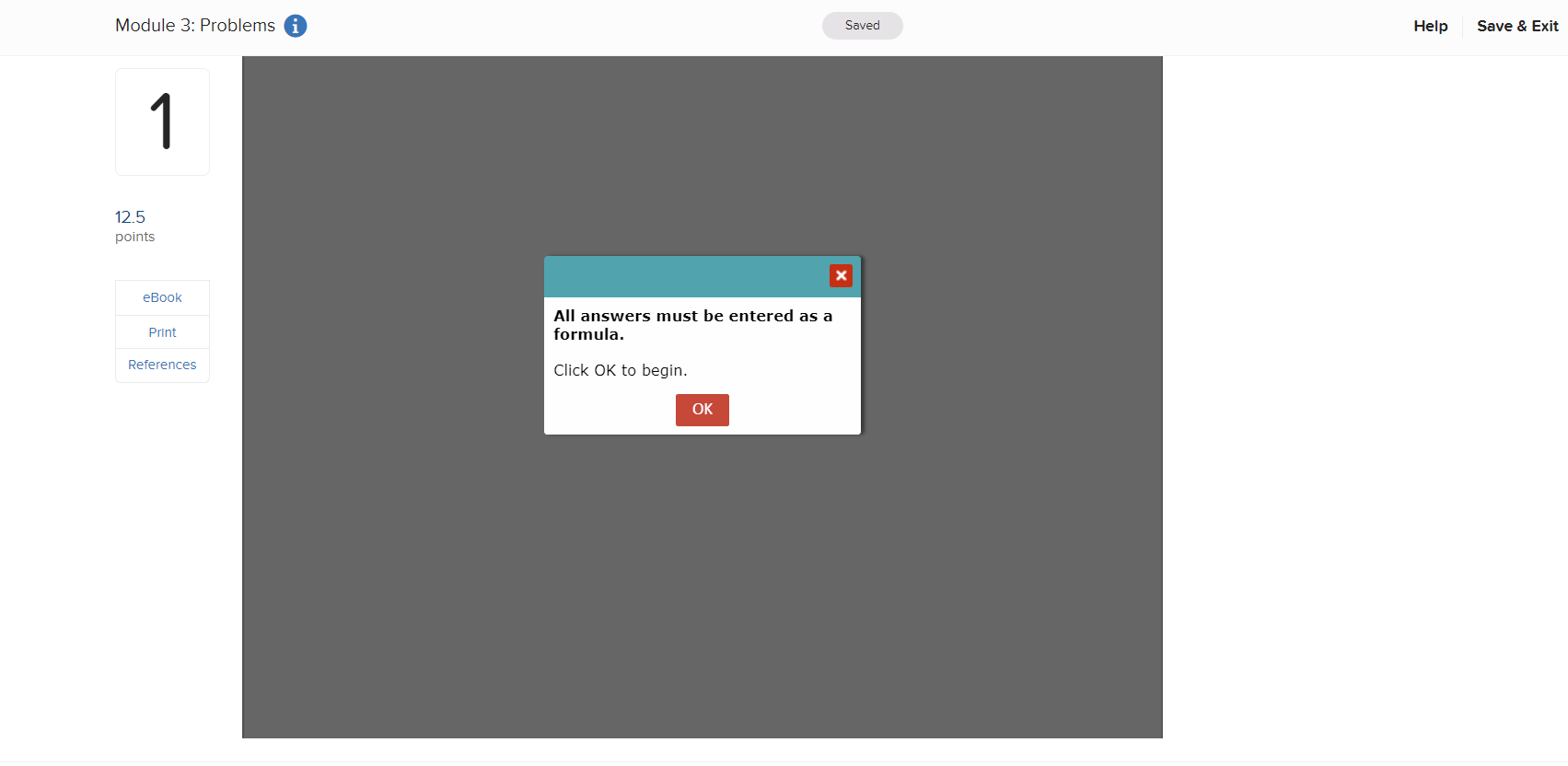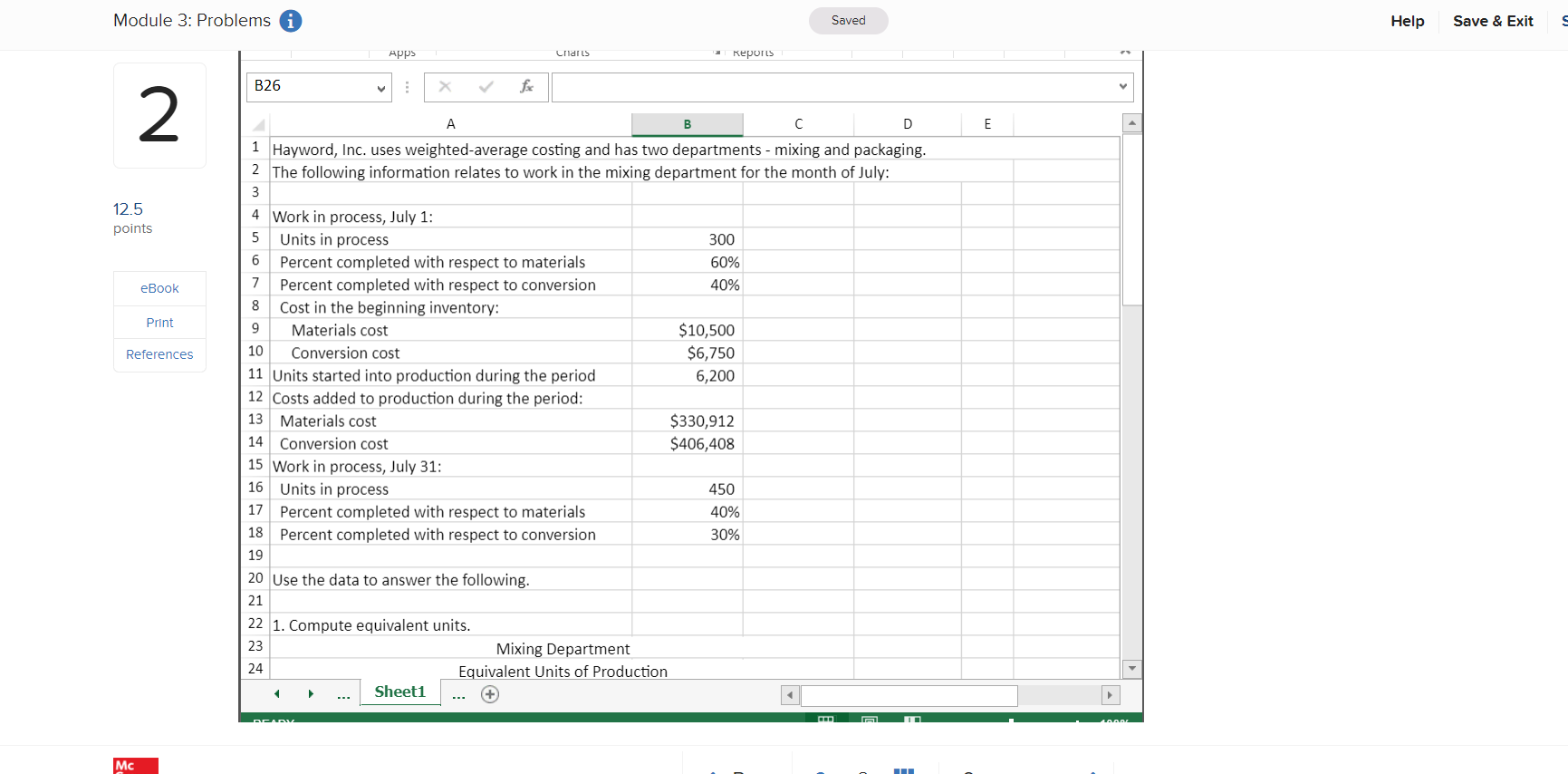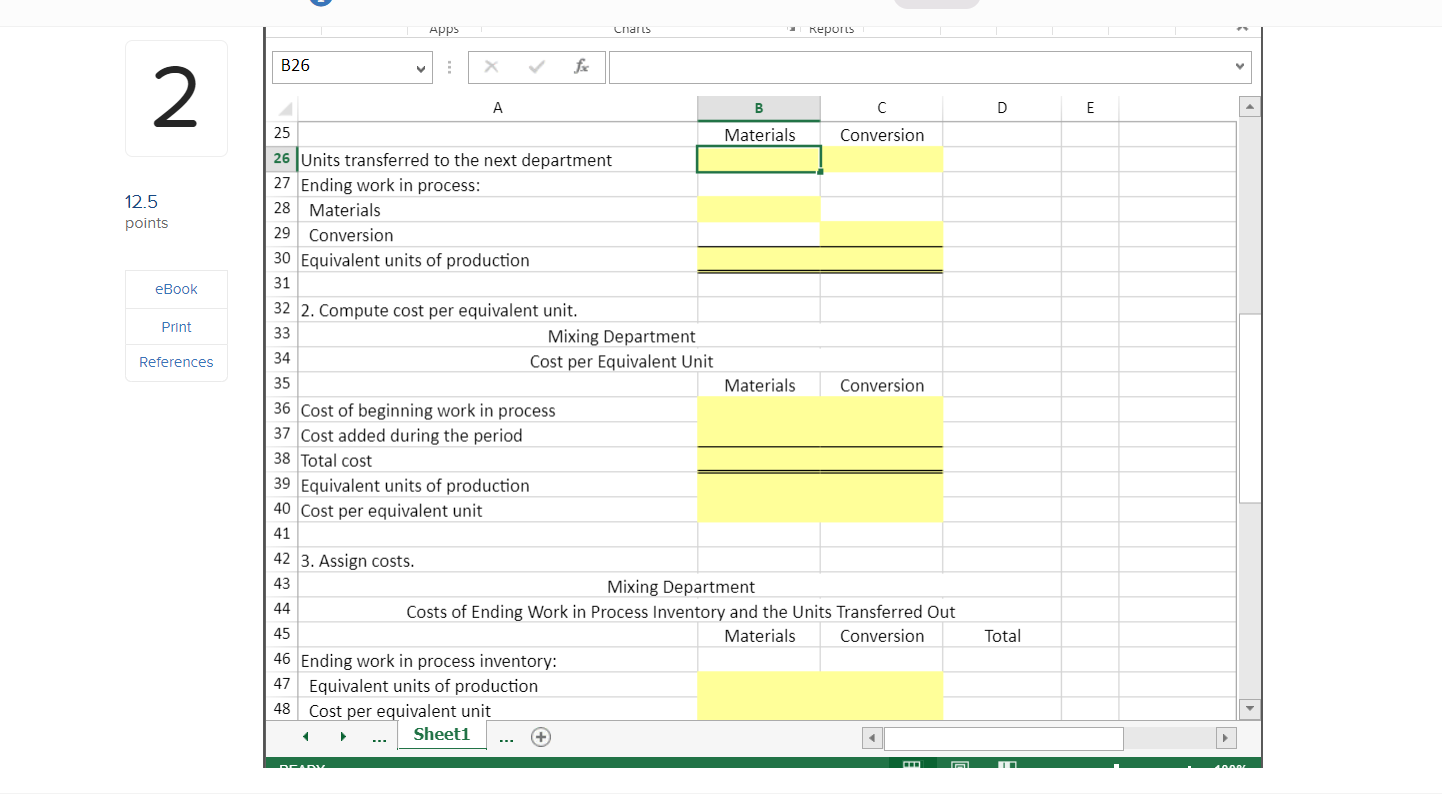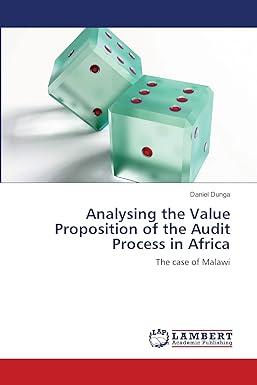Answered step by step
Verified Expert Solution
Question
1 Approved Answer
Please enter the answer and formula. Thanks 1 Overhead Analysis and Preparing Schedules of Cost of Goods using Excel's SUM and Basic Math Functions 12.5




 Please enter the answer and formula.
Please enter the answer and formula.
Thanks
1 Overhead Analysis and Preparing Schedules of Cost of Goods using Excel's SUM and Basic Math Functions 12.5 points Stanford Enterprises has provided its manufacturing estimated and actual data for the year end. The Controller has asked you to compute the predetermined overhead rate, the schedule of cost of goods manufactured, and the schedule of cost of goods sold. Use the information included in the Excel Simulation and the Excel functions described below to complete the task. eBook Print References Cell Reference: Allows you to refer to data from another cell in the worksheet. From the Excel Simulation below, if in a blank cell, "=E5 was entered, the formula would output the result from cell E5, or $275,000 in this example. Basic Math functions: Allows you to use the basic math symbols to perform mathematical functions. You can use the following keys: + (plus sign to add), - (minus sign to subtract), * (asterisk sign to multiply), and / (forward slash to divide). From the Excel Simulation below, if in a blank cell"=E6+E7" was entered, the formula would add the values from those cells and output the result, or 52,760 in this example. If using the other math symbols the result would output an appropriate answer for its function. SUM function: Allows you to refer to multiple cells and adds all the values. You can add individual cell references or ranges to utilize this function. From the Excel Simulation below, if in a blank cell"=SUM(E10, E11, E12) was entered, the formula would output the result of adding those three separate cells, or 1,214,050 in this example. Similarly, if in a blank cell"=SUM(E10:E12)" was entered, the formula would output he same result of adding cells, except they are expressed as a range in the formula, and the result would be 1,214,050 in this example. Module 3: Problems i Saved Help Save & Exit 1 12.5 points eBook All answers must be entered as a formula. Print References Click OK to begin. OK Module 3: Problems i Saved Help Save & Exit Apps chals Reports B26 fx 2 B E A C D 1 Hayword, Inc. uses weighted average costing and has two departments - mixing and packaging. 2 The following information relates to work in the mixing department for the month of July: 3 12.5 points eBook Print References 4 Work in process, July 1: 5 Units in process 300 6 Percent completed with respect to materials 60% 7 Percent completed with respect to conversion 40% 8 Cost in the beginning inventory: 9 Materials cost $10,500 10 Conversion cost $6,750 11 Units started into production during the period 6,200 12 Costs added to production during the period: 13 Materials cost $330,912 14 Conversion cost $406,408 15 Work in process, July 31: 16 Units in process 450 17 Percent completed with respect to materials 40% 18 Percent completed with respect to conversion 30% 19 20 Use the data to answer the following. 21 22 1. Compute equivalent units. 23 Mixing Department 24 Equivalent Units of Production Sheet1 Mc Apps challs Reports B26 X 2 D E 12.5 points eBook Print References C 25 Materials Conversion 26 Units transferred to the next department 27 Ending work in process: 28 Materials 29 Conversion 30 Equivalent units of production 31 32 2. Compute cost per equivalent unit. 33 Mixing Department 34 Cost per Equivalent Unit 35 Materials Conversion 36 Cost of beginning work in process 37 Cost added during the period 38 Total cost 39 Equivalent units of production 40 Cost per equivalent unit 41 42 3. Assign costs. 43 Mixing Department 44 Costs of Ending Work in Process Inventory and the Units Transferred Out 45 Materials Conversion 46 Ending work in process inventory: 47 Equivalent units of production 48 Cost per equivalent unit Sheet1 Total Materials Conversion Total 2 12.5 points eBook Print 45 46 Ending work in process inventory: 47 Equivalent units of production 48 Cost per equivalent unit 49 Cost of ending work in process inventory 50 51 Units completed and transferred out: 52 Units transferred to the next department 53 Cost per equivalent unit 54 Cost of units transferred out 55 56 4. Prepare reconciliation. 57 Mixing Department 58 Cost Reconciliation 59 Costs to be accounted for: 60 Cost of beginning work in process inventory 61 Costs added to production during the period 62 Total cost to be accounted for 63 Costs accounted for as follows: 64 Cost of ending work in process inventory 65 Cost of units transferred out 66 Total cost accounted for 67 Sheet1 References READY 100% Attempt(s) 2/3 Hint Show MeStep by Step Solution
There are 3 Steps involved in it
Step: 1

Get Instant Access to Expert-Tailored Solutions
See step-by-step solutions with expert insights and AI powered tools for academic success
Step: 2

Step: 3

Ace Your Homework with AI
Get the answers you need in no time with our AI-driven, step-by-step assistance
Get Started


